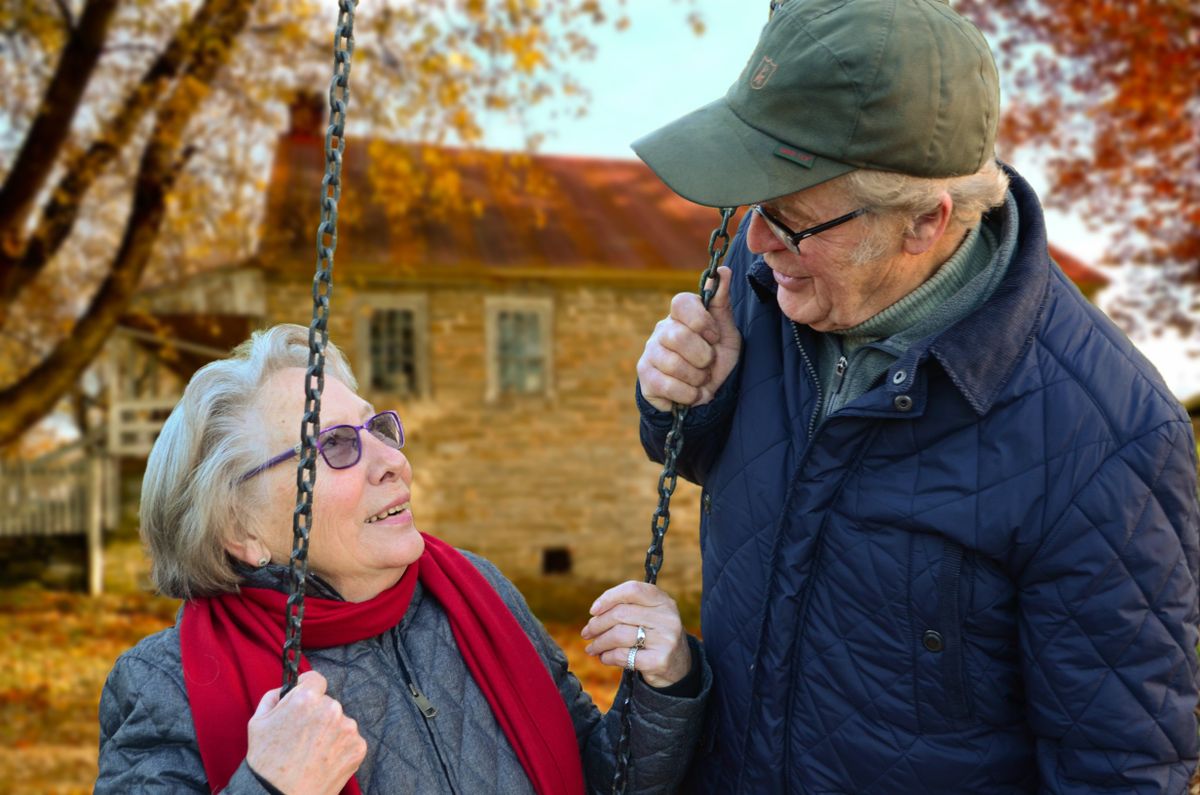Fall Prevention: The Risk Factors You Need To Know
If you or a loved one is aging at home, the risk of fall-related injuries is real. Seniorly's got everything you need to know about fall prevention.

For older adults, maintaining independence within the comfort of their home is a cherished goal, but the risk of falls can pose significant challenges. In fact, the Centers for Disease Control (CDC) reports that almost 3 million older adults end up in the emergency room each year as the result of a preventable fall. So while a healthy approach to aging needs to include things like exercise, socialization and nutrition - we're here to share that fall prevention strategies are just as important. Seniorly's got a host of information about what makes us more prone to falls as we age, as well as what we can do to prevent them.
Why are older adults more prone to falls?

As we age, there are quite a few factors that contribute to an increased likelihood of accidents resulting from a fall. And while we may not like it, they're certainly considered a normal part of the aging process. Here are just a few of the most common reasons why older adult falls might happen:
- Reduced muscle strength and mass: Aging is often accompanied by a natural decline in muscle strength and mass, impacting balance and stability. Weakened muscles make it more challenging for older adults to maintain steady footing and respond swiftly to potential hazards.
- Changes in vision: Age-related changes in vision, such as decreased depth perception and diminished peripheral vision, contribute to an elevated risk of falls. Impaired sight can hinder the ability to detect obstacles and navigate the environment safely.
- Balance and coordination issues: Aging can affect the body's coordination and proprioception (how we perceive the movement of our bodies), leading to challenges in maintaining equilibrium. Diminished balance and coordination make older adults more susceptible to stumbling or losing their footing, particularly when navigating uneven terrain.
- Medication side effects: The use of multiple medications, which is common among older adults, can introduce side effects like blood pressure changes, dizziness or lightheadedness, amplifying the risk of falls. Understanding the potential effects of medications and their interactions is crucial for fall prevention.
- Chronic health conditions: Underlying health conditions such as arthritis, osteoporosis, or neurological disorders can compromise an older adult's physical abilities and increase the likelihood of falls. Managing and addressing these conditions is pivotal in reducing fall risks.
- Environmental factors: Finally, most home environments host tripping hazards, such as clutter, poor lighting, slippery surfaces, or edges created by rugs or thresholds. These can all contribute to falls among older adults, so a proactive approach to home safety modifications can mitigate these risks and enhance overall safety.
Preventing falls: which activities put you at risk?

From a broken bone to a head injury and more - there are a host of injuries in the home that, with a little extra caution, we can avoid. Certain activities pose a higher risk of precipitating falls in older adults, so it's important to know what they are so we can avoid future falls.
- Ascending or descending stairs: Negotiating stairs can be particularly challenging for older adults due to issues with balance and strength. Install those handrails, make sure the staircase is well-lit, and ditch the high heels when you're on the stairs!
- Bathing and showering: Slippery surfaces in bathrooms make bathing and showering areas susceptible to falls. Implementing non-slip mats, grab bars, and shower seats enhances safety during these essential activities.
- Reaching or bending: Stretching, reaching for objects, or bending down can compromise balance. Organizing frequently used items within easy reach and avoiding excessive bending can minimize the risk of falls.
- Standing on unstable surfaces: Standing on uneven or unstable surfaces, such as wobbly step stools and gravelly paths can increase the risk of losing balance. Use stable and secure platforms for activities that involve standing can prevent potential falls.
- Walking on slippery floors: Negotiating wet or slippery floors, especially in kitchens or bathrooms, can lead to falls. Wearing non-slip footwear and promptly addressing spills or wet surfaces minimizes the risk associated with walking on slick floors.
- Multitasking: While we all do it at times, multitasking can divert attention and compromise stability. Encouraging older adults to focus on one activity at a time promotes safer engagement and reduces the risk of falls associated with multitasking.
Fall prevention strategies: how to prevent future falls

While there may not be much we can do about the aging process itself, there are lots of things we can do to make ourselves less susceptible to the risks that accompany a fall.
Exercises to help avoid falls
Ensuring strength and stability is fundamental in reducing the susceptibility to falls, and for better or for worse, physical activity is a necessary part of fall prevention. If you or a loved one wants to avoid serious injury, make sure your weekly routine covers the following:
- Balance Exercises: Engaging in activities that improve balance, like standing on one leg or walking heel-to-toe can enhance balance and proprioception, helping older adults maintain stability and reduce the risk of stumbling. Exercises that train you to sit and slowly rise are especially good - ere's a great video demonstrating some balance exercises - only 10 minutes!.
- Strength Training: Regular strength exercises, focusing on major muscle groups, assist in building and maintaining muscle mass and increasing bone density. This increased strength contributes to improved overall stability and reduces the likelihood of a broken bone. Here's another short video that focuses on strength training.
- Flexibility Routines: Incorporating stretching exercises, such as yoga or tai chi, enhances flexibility and joint mobility. Improved flexibility aids in maneuvering daily activities and promotes better balance.
- Aerobic Workouts: Engaging in moderate-intensity aerobic exercises, such as brisk walking or swimming, not only boosts cardiovascular health but also contributes to overall physical fitness, reducing the risk of falls by enhancing endurance and coordination.
- Core Strengthening: Exercises that target the core muscles, including abdominal and lower back muscles, are vital for maintaining postural stability. A strong core provides essential support for balance during various activities.
If you or a loved one is starting from a place of inactivity, it may be helpful to consult with a physical therapist, occupational therapist or personal trainer who can develop a program to build your strength in a safe and gradual way over time.
Home modifications to prevent falls
Creating a home environment that prioritizes safety is so important to minimizing the risk of fall injuries. By implementing specific modifications, older adults can make their living spaces more safe and reduce the risk of falling:
- Improving Lighting: Adequate lighting, especially in hallways, staircases, and the garage or outdoor walkway reduces the risk of tripping or missteps. Install brighter bulbs, night lights, and motion-sensor lights to ensure well-lit pathways.
- Installing Grab Bars: Strategically placing grab bars in key locations, such as the bathroom and along staircases, provides crucial support for stability and balance, aiding older adults in navigating these spaces safely.
- Removing Tripping Hazards: While we may love the look of our rugs and carpets, those transitions make tripping hazards. Clearing those walkways of clutter, loose rugs, and unnecessary furniture minimizes the risk of tripping. Ensure that pathways are free from obstacles and maintain a tidy living space to promote safe mobility.
- Securing Non-Slip Flooring: If you simply must have rugs, make sure you are using rugs with slip-resistant backing, particularly in areas prone to moisture like bathrooms and kitchens to help prevent accidental slips.
- Adjusting Furniture Arrangement: Rearranging furniture to create wider pathways and removing any obstructions facilitates easy movement. Ensuring that there is ample space to maneuver reduces the likelihood of collisions and falls.
- Installing Handrails: Along staircases and in areas with elevation changes, installing sturdy handrails offers additional support and assists older adults in maintaining balance while ascending or descending. Properly anchored handrails provide essential stability.
Safeguarding older adults from the risks of falls requires a multifaceted approach. By understanding the common causes of falls, implementing preventive strategies, and being aware of available resources, both individuals and their caregivers can play pivotal roles in promoting a safer and more secure living environment. As we collectively strive to enhance the well-being of older adults, the commitment to fall prevention ensures that they can age gracefully in their homes, maintaining independence while minimizing the potential impact of falls on their health and quality of life.
Works consulted:
Marlena del Hierro earned her Master of Arts degree in Gerontology from San Francisco State University and her Bachelor of Arts degree in Human Development from California State University. She also serves in an advisory capacity for Jukebox Health. Marlena is a vocal advocate for evolving the aging paradigm, and is a frequent contributor to public discussions about aging. She has served as a resource for media outlets like WGBH, FOX News, CNBC and the Today Show.
To learn more about Seniorly's editorial guidelines, click here.
Sign up for our Healthy Aging Handbook
Seniorly’s Senior Living experts created a comprehensive handbook to help people age happily while ensuring they love where they live. Enter your email address below to receive your copy and learn more about Healthy Aging and Senior Living.*
*By submitting your email address above, you consent to receive occasional email communications from Seniorly, including educational content and tips, newsletters, and other relevant updates and offerings. You can unsubscribe at any time and we will never sell or distribute your email address to a third party. You can view our Privacy Policy here.
